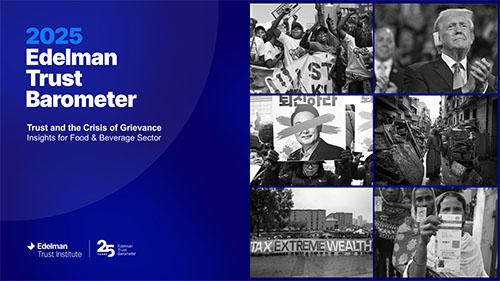How will you shop online in 2025? The way you browse, choose, and buy is about to change—big time.
The E Barometer reveals surprising insights that could make your next online purchase faster, smarter, and more personalized. If you want to stay ahead and make the most of these new trends, keep reading. Your future shopping habits are closer than you think.

Credit: www.partoo.co
E Barometer Insights
The E Barometer offers a clear look at how people shop online in 2025. It collects data from many sources to show real trends. This helps businesses and shoppers understand the changing habits in e-commerce.
The findings reveal what drives buyers and which tools they use most. These insights help improve online shopping experiences everywhere.
Data Sources And Methodology
The E Barometer uses surveys, sales data, and website analytics. It gathers information from thousands of shoppers worldwide. The data covers various age groups and shopping preferences.
Researchers analyze this data with clear, simple methods. They focus on patterns that appear over time. This approach ensures reliable, easy-to-understand results.
Key Findings On Consumer Behavior
Shoppers prefer fast and easy checkout processes. Mobile shopping rises sharply, as more people use phones. Security remains a top concern during online purchases.
Many buyers now expect personalized offers based on their past shopping. Social media influences product choices strongly. Sustainability and ethical brands gain more attention from consumers.
Emerging Shopping Technologies
Shopping online in 2025 is changing fast. New technologies make buying easier and more fun. These tools help shoppers find what they want quickly. They also create a more personal and real experience. The E Barometer shows key trends shaping this future.
Ai And Personalization
Artificial intelligence helps stores learn about shoppers. It suggests products based on past choices. This makes shopping faster and smarter. AI chatbots answer questions any time. They guide shoppers to the best deals. Personalized ads show items shoppers like most. This saves time and avoids useless browsing.
Augmented And Virtual Reality
Augmented reality lets shoppers see products in their space. Try a sofa in your living room before buying. Virtual reality creates a store experience from home. Walk through aisles and pick items like in real life. These tools reduce guesswork and returns. They give a clear idea of the product’s look and feel.
Voice Commerce
Voice assistants like Alexa or Google help with shopping. Just speak your order instead of typing. Voice commands make buying quick and easy. Shoppers can reorder favorite products fast. It is useful when hands are busy or for quick searches. Voice commerce is growing as more people use smart speakers.
Changing Payment Methods
Payment methods for online shopping are evolving fast. Shoppers want quick, safe, and easy ways to pay. The E Barometer shows clear shifts in how people pay in 2025. Traditional cards still matter, but new options gain ground every day.
Simple payments that save time attract more users. Security remains a top concern. Many prefer methods that protect their data and reduce fraud risks.
Digital Wallets And Cryptocurrencies
Digital wallets are now common on many shopping sites. They store payment info securely and speed up checkout. Examples include Apple Pay, Google Pay, and Samsung Pay. These wallets work well on phones and computers.
Cryptocurrencies like Bitcoin and Ethereum also appear more often. Some stores accept crypto as payment. It offers privacy and no middleman fees. Still, not all buyers use it yet. Its value can change a lot, which makes some shoppers cautious.
Buy Now, Pay Later Trends
Buy Now, Pay Later (BNPL) options grow in popularity. They let shoppers split costs into smaller payments. This method helps people buy without full upfront cash.
BNPL services usually offer interest-free installments. This appeals especially to younger buyers. It can increase spending, but users must avoid late fees. Retailers find BNPL boosts sales and customer loyalty.

Credit: www.afrobarometer.org
Sustainability In E-commerce
Sustainability is a key focus in online shopping by 2025. Shoppers care more about the environment. They want to buy in ways that protect the planet. E-commerce businesses respond by using greener methods. This helps reduce waste and pollution. The E Barometer shows clear trends toward eco-friendly choices.
Eco-friendly Packaging
Packaging is a major concern for online buyers. Many products arrive with too much plastic and foam. In 2025, brands prefer materials that break down easily. Paper, cardboard, and plant-based plastics are popular. These materials reduce landfill waste. Simple designs help cut down on extra packaging. Buyers appreciate boxes they can recycle or reuse.
Green Shipping Options
Shipping creates pollution from trucks, planes, and ships. More stores offer green shipping choices today. Electric delivery vans and bikes are used in cities. Some companies plant trees to offset carbon emissions. Buyers can pick slower delivery to lower pollution. This reduces the carbon footprint of their orders. Green shipping is growing as a key factor in buying decisions.
Shifts In Consumer Preferences
Consumer preferences in online shopping are changing fast. The E Barometer shows clear trends shaping the future. Shoppers want easier and faster ways to buy. They also prefer new platforms that feel natural and social. These shifts affect how businesses sell products online. Understanding these changes is key for success in 2025.
Demand For Speed And Convenience
Shoppers expect quick access to products and services. Fast delivery is no longer a bonus but a must. Many buyers choose stores that offer same-day or next-day shipping. Easy checkout processes reduce the time spent on buying. Mobile-friendly websites and apps make shopping smoother. Convenience drives decisions more than price for many users.
Rise Of Social Commerce
Social media platforms have become popular shopping spots. People discover products through posts, stories, and videos. They trust recommendations from friends and influencers online. Buying directly from social apps saves time and effort. Brands now focus on creating engaging content to attract buyers. Social commerce blends shopping with social interaction naturally.
Retailer Adaptations
Retailers must change to keep up with online shopping in 2025. New habits and tech shape how stores sell products. They focus on smooth shopping and happy customers. This section explores how stores adapt to meet new demands.
Omnichannel Strategies
Stores connect online and offline shopping well. Shoppers use phones, computers, and stores. Retailers make these paths work together. For example, buy online and pick up in store. This saves time and makes shopping easy.
Many stores use apps and websites with the same info. Customers see stock, prices, and deals anytime. This helps them plan purchases better. It also cuts confusion between store and online offers.
Enhanced Customer Experience
Good service is key to winning shoppers. Retailers add live chat and quick answers online. Some use virtual try-ons or 3D views of products. This helps buyers feel sure before paying.
Fast delivery and simple returns make customers trust stores more. Clear info and easy steps reduce stress. Stores also listen to feedback and fix issues fast. Happy customers come back and tell others.
Future Challenges And Opportunities
Online shopping in 2025 faces many challenges and offers new chances for growth. The E Barometer shows that shoppers want easy, fast, and safe experiences. Businesses need to balance these needs while dealing with new rules and technologies. This balance will shape the future of e-commerce.
Understanding these challenges helps companies prepare better. It also opens doors to innovation and stronger customer trust. Let’s explore key areas that will impact online shopping in the near future.
Data Privacy Concerns
Data privacy remains a top worry for online shoppers. People want control over their personal information. They expect companies to protect their data from misuse. New laws make businesses more responsible for data security. Shoppers may avoid sites that seem unsafe or intrusive. Trust is essential for long-term customer loyalty. Companies must be clear about how they collect and use data.
Innovation And Competition
New technologies push companies to innovate constantly. Artificial intelligence, virtual reality, and faster delivery change shopping habits. Businesses that adapt quickly gain more customers. Competition grows as more players enter the market. Small companies can compete by offering unique products and services. Innovation helps create better shopping experiences and builds brand loyalty. Staying ahead means listening to customers and improving regularly.

Credit: www.edelman.com
Frequently Asked Questions
How Will Online Shopping Change By 2025?
By 2025, online shopping will be faster, more personalized, and immersive. AI and AR technologies will enhance user experience, making browsing and purchasing seamless. Mobile shopping will dominate, and eco-friendly options will grow. Payment methods will be more secure and diversified, improving convenience and trust for shoppers.
What Role Does Ai Play In Future Online Shopping?
AI will analyze customer preferences to offer tailored recommendations. It will improve chatbots for instant support and automate inventory management. AI-driven visual search and voice assistants will simplify product discovery, making online shopping more intuitive and efficient in 2025, enhancing overall customer satisfaction.
How Important Is Mobile Shopping In 2025?
Mobile shopping will be crucial, accounting for most online purchases by 2025. Optimized apps and responsive websites will ensure smooth experiences. Features like one-click payments and AR try-ons on mobile devices will drive convenience and engagement, making smartphones the preferred shopping tool.
Will Sustainability Influence Online Buying Decisions?
Yes, sustainability will strongly impact online shopping choices. Consumers will prefer eco-friendly products and brands with transparent supply chains. Retailers will highlight green practices and offer carbon-neutral shipping. This trend will shape product development and marketing strategies in 2025.
Conclusion
Online shopping in 2025 will feel faster and smarter. People want easy ways to buy and pay. Mobile devices will play a big role. Personal offers will help shoppers choose better. Trust and security will stay very important. New technology will change how we shop every day.
The E Barometer shows clear trends for the future. Staying aware of these changes helps everyone shop well. The online market keeps growing and evolving. A simple, safe, and smooth shopping experience matters most.
